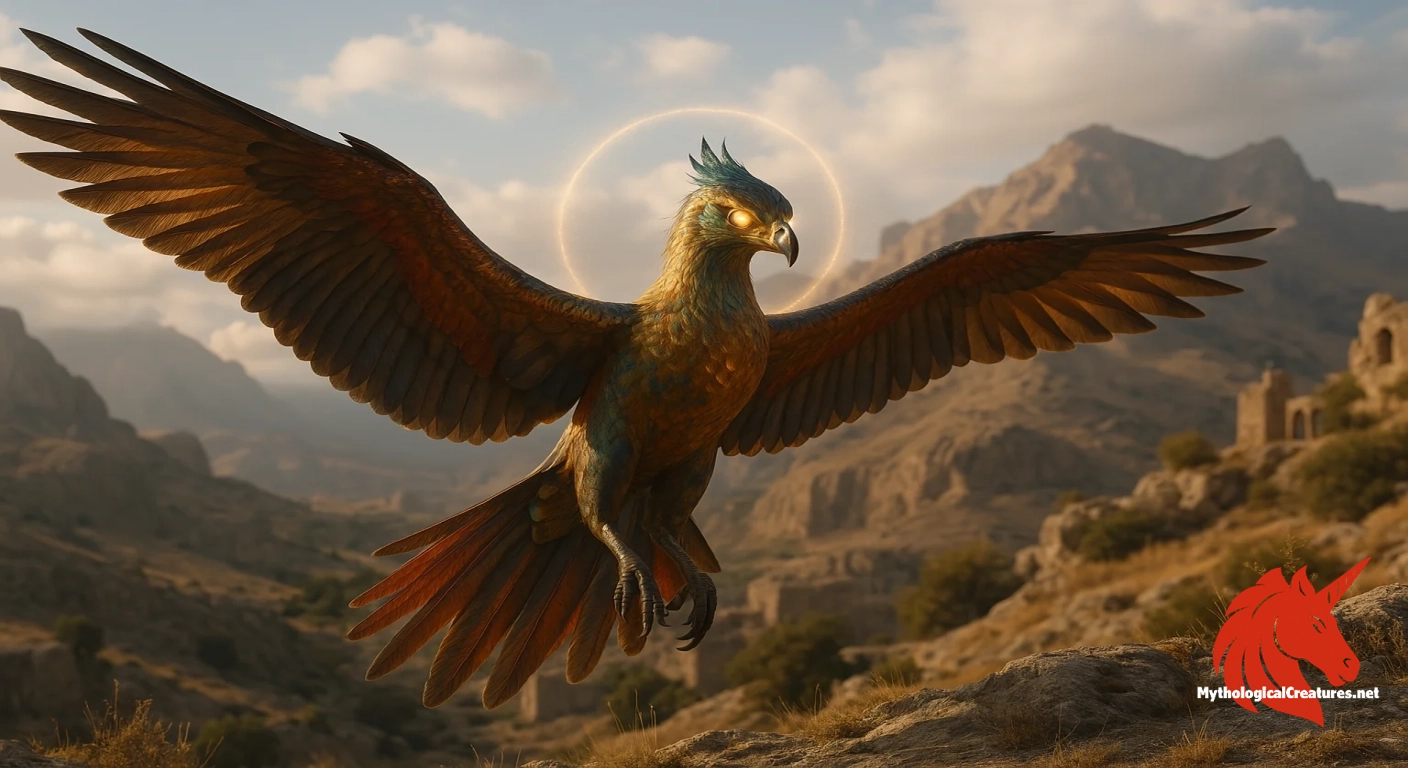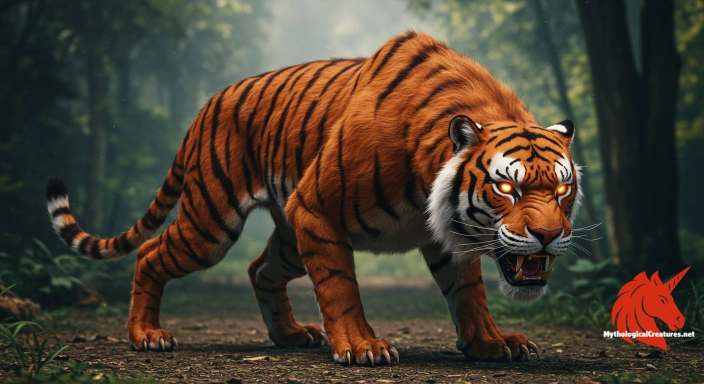Huma bird: The Huma bird is a mythical creature from Iranian legends, celebrated for its eternal flight high above the earth.

Huma bird
Huma bird - Represents unattainable freedom, eternal flight, and the favor of the divine.
Origins & First Encounters
The Huma bird stands as one of the most enigmatic figures in Persian lore, its legend blossoming from ancient Iranian traditions and mystical narratives. Born of a cultural tapestry woven with vibrant myth and poetic imagery, it represents an ideal of heavenly grace and unattainable perfection. Revered across epochs, its myth emerged in the earliest fables where it symbolised a divine force beyond the constraints of the earthly realm. It is said that the bird soars unceasingly, never descending to the ground, which has come to embody a spiritual elevation and a blessed destiny. The creature’s first impressions are rooted in antiquity, yet its portrayal has matured through the continuous infusion of oral and written storytelling. It has been celebrated in the intricate verses of Sufi mystics and in the eloquent expression of Diwan poetry. Imbued with a sense of impermanence and the fleeting beauty of life, the Huma has inspired a diverse range of interpretations among communities that cherished its symbolisms. The bird’s continual flight the heavens has been seen as a metaphor for the soul’s quest for liberation and transcendence. Its enduring allure ensures that modern audiences remain captivated by both its majestic mystery and its storied past. The Huma bird, with its blend of myth and metaphor, continues to shine as a beacon of hope and cosmic wonder.
Source Texts & Tale Variants
Ancient Persian epics and classical texts provide some of the earliest glimpses of the Huma bird, where it is interlaced with themes of divine favour and mysticism. Early Avestan literature hinted at its grandeur, setting a precedent for the rich allegories that would follow. Over time, medieval manuscript illuminations and poetic treatises, particularly within Sufi and Diwan collections, have expanded its narrative through layered metaphors and symbolic nuances. Each retelling has added creative flourishes, depicting the Huma not merely as a bird but as an omen of prosperity and a harbinger of noble destinies. Various local versions diverge in detail, with some accounts suggesting that the mere sight of the Huma brings about miraculous transformations in the fortunes of kings and commoners alike. Manuscripts from the Islamic Golden Age, replete with elaborate miniatures, further underscore its role as a marker of transcendence and ethereal beauty. Folktales passed down through generations have imbued the creature with layers of allegorical meaning, making it a living bridge between myth and reality. These narrative strands, drawn from oral traditions and literary sources alike, reflect a shared cultural passion for the ineffable and the sublime. The multiplicity of sources has allowed the Huma to evolve continuously, inspiring successive interpretations that have enriched its mythos. In every variant, the bird’s elusive flight and divine essence remain central, speaking to universal themes of purity and unreachable grandeur.
Form & Powers
Descriptions of the Huma bird are both vivid and symbolically potent, drawing the imagination to a creature of exceptional splendour. It is frequently portrayed as a large bird with an impressive wingspan, its plumage catching the light in a dazzling array of colours reminiscent of precious stones. The feathers are often described as shimmering with intensity, evoking the ethereal glow of dawn and twilight combined into one. Its eyes are portrayed as luminous orbs that seem to hold the secrets of the cosmos and an ancient wisdom beyond mortal ken. Artists and poets often render its form with an almost fluid grace, emphasising smooth, elegant lines that speak to an innate aerial majesty. The bird’s beak is crafted with a delicate yet resolute curvature, while its talons are elegantly shaped to suggest both beauty and latent power. Every aspect of its appearance, from the iridescence of its plumage to the graceful arcs of its flight, contributes to a portrayal steeped in pure symbolism. Some traditions even claim that intricate patterns, reminiscent of celestial constellations, embellish its feathers, further linking it to the divine. The majestic silhouette of the Huma conveys a narrative of both strength and gentleness, inviting viewers to glimpse the otherworldly. Its overall physical presence bridges the sublime qualities of nature and the ineffable character of myth, making it a perennial icon in artistic depictions.
Regional Faces
Across various regions, the legend of the Huma bird has been adapted and transformed to resonate with local cultural values and aesthetic expressions. In the heart of Persia, it is celebrated as a symbol of supreme fortune and an emblem of auspicious destiny, continuously elevated by poetic tradition. In neighbouring territories, such as in parts of Central Asia and Turkey, the Huma’s image merges with indigenous folklore where it is often associated with mysticism and royal favour. Some local narratives attribute healing powers and rejuvenating qualities to the bird, blending its symbolism with themes of hope and regeneration. The bird is sometimes featured in regional art and decoration, where its depiction is tailored to mirror the local colour palette and stylistic nuances of traditional art. Variants of the legend even render the Huma as a guardian spirit, whose rare appearance is said to foretell pivotal moments of change. The regional stories also integrate the bird into historical and legendary accounts of prominent leaders and heroic figures, merging myth with a sense of national identity. Such adaptations underline the flexibility of its symbolism, allowing the creature to be re-imagined in ways that cater to the spiritual and cultural ethos of each community. This regional plurality enriches the Huma’s legacy, ensuring that while its core mystique remains intact, its outward representation is as diverse as the lore itself. In these ways, the Huma serves as a cultural bridge, uniting different traditions under a shared symbol of celestial wonder.
Cultural Parallels
When placed alongside other legendary birds from global mythologies, the Huma exhibits striking similarities as well as unique traits that set it apart. In parallel with the phoenix of Greco-Roman and later Western lore, the Huma is celebrated for its associations with rebirth and eternal vigour. It also resonates with the Chinese Fenghuang, a bird that symbolises virtue, grace, and the harmony of yin and yang. Unlike its counterparts, however, the Huma is distinguished by its flight, for it is forever aloft and never touches the ground, highlighting an element of perpetual transcendence lacking in many other legends. Both the Huma and these culturally analogous birds serve as conduits for expressing the interface between the divine and human realms, embodying the aspiration of the soul towards loftiness. Their shared role as harbingers of change and indicators of auspicious events fosters a cross-cultural dialogue about destiny and renewal. The Huma’s myth has also been compared with other avian symbols present in folklore, where the motif of an ever-flying creature encapsulates the idea of an unattainable ideal. Through these comparisons, it becomes evident that different societies have long sought to convey truths about life, rebirth, and spiritual elevation using similar elemental imagery. Each tradition adapts the symbolism of its mythical birds to reflect its particular cultural narratives, yet the universal appeal of the motif binds them in a common heritage of mythic wonder. In this comparative view, the Huma not only enriches our understanding of Persian mythology but also celebrates a global tradition of sacred, otherworldly birds.
Legacy & Modern Evolution
The historical evolution of the Huma bird underscores its enduring impact on the cultural and artistic landscapes of the modern world. Initially rooted in ancient texts and oral traditions, its early depictions were imbued with a sense of divine providence and heroic grandeur. Over time, this mythical motif was reinterpreted by poets and mystics, who elevated the Huma to a symbol of transcendental hope and the eternal struggle for perfection. Its image has found a new lease of life in contemporary literature and visual arts, where reinvented narratives celebrate its emblematic connection with self-renewal and spiritual ascent. Modern reinterpretations have shifted slightly from the purely mythic to include allegories of personal transformation and the quest for liberation from worldly constraints. Popular culture and modern art have embraced the Huma as an icon of resilience and sublime beauty, often portraying it as a beacon of light in moments of adversity. This timeless creature continues to inspire a diverse range of artistic mediums, from poetry and painting to films that explore its metaphorical dimensions. The bird’s consistent depiction as forever aloft has come to symbolise an unattainable ideal, inspiring individuals to pursue higher aspirations despite the challenges of reality. Its historical journey from ancient myth to modern legend reflects both a continuity of tradition and a dynamic capacity for reinvention. Today, the Huma bird remains a powerful symbol intertwined with themes of destiny, transformation, and the eternal allure of the sublime.
Interesting Fact
It is believed that a glimpse or even the shadow of the Huma bird can bestow immense luck and eternal glory on those fortunate enough to witness it.
Quick Creature Info
Origin:
Associations:
Our Mythic Legendary Rating:

Also Sometimes Known As:
Habitat:
Supernatural Powers:
Physical Attributes:
Abilities:
Behavior:
Lore:
References
Discover Another Mythical Legend You May Not Have Heard Of?
Uncover the mysteries of ancient folklore and expand your knowledge of legendary beings from cultures around the world.
Dare to Meet the Khoirentak tiger....
Curated by the Mythological Creatures Team (rev. May 2025)
